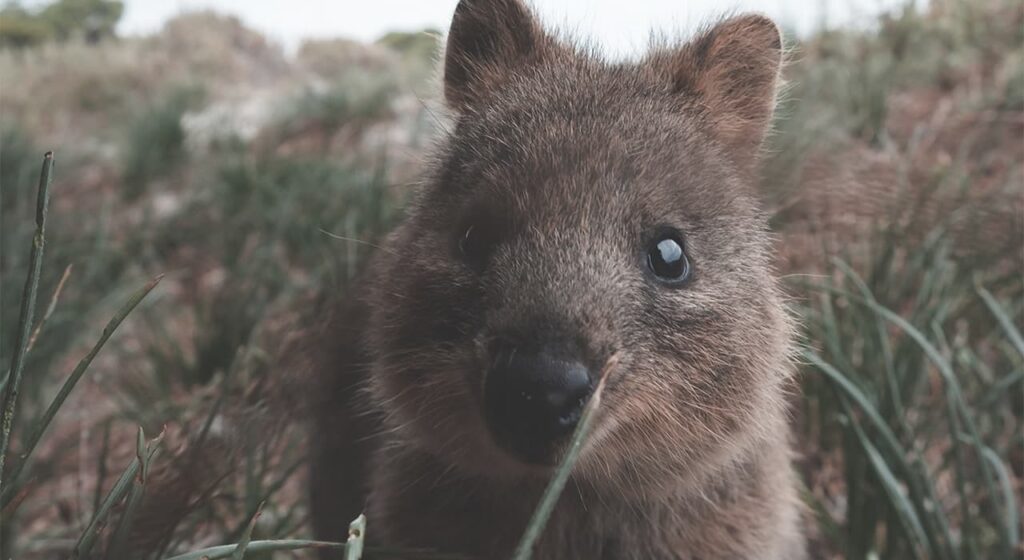The quokka belongs to the kangaroo family and strongly resembles a large kangaroo in appearance. However, the size of this animal is quite modest – it is no larger than an average, domestic cat.
The kangaroo family includes many species of animals that have a lot of differences. But the quokka has a specific trait that is unique to it – too short a tail. This body element in all kangaroos is actively used as a support. Thanks to the tail, the vast majority of kangaroo species are able to defend themselves by striking their opponents with their strong hind legs. The quokka’s small tail does not allow it to do this.
This small bouncing animal is covered with a medium-sized coat. Color is usually reddish, sometimes with gray shades. The entire visible surface of a quokka’s body is covered with wool, except for the tail and the tips of the legs. The skin in these areas is dark, almost black.
The quokka’s hind legs are powerful and can jump. Front paws are much shorter and weaker. With their help, the animal picks up and holds food. The quokka eats grass, leaves, shoots and fruits of trees.
Lifestyle of the quokka
Historically, the quokka, like other kangaroos, was widespread throughout most of Australia (list of animals in Australia). But with the beginning of active settlement of the continent, the population began to decline sharply. And the reason for this was not trivial poaching or the development of industry, but the animals brought in.
The quokka is a defenseless creature. It can’t fight like the great kangaroo, and is not adapted to meet predators. Moreover! There have never been any large predatory animals in its habitat. Therefore, the main enemies and exterminators of the quokk were ordinary cats and dogs, which people brought with them.
Nowadays this small animal lives on the islands of Bald, Rottnest and Penguin near Australia. It is also found on the mainland near the town of Albany. Typical quokka habitat is dry grassy fields with dense shrubbery.
When living conditions become uncomfortable, quokkas are capable of migrating to atypical places. For example, during a severe drought, they migrate en masse to swampy areas where they find acceptable amounts of water and air humidity.
The quokka is a nocturnal animal. It has fairly good eyesight, a keen sense of smell and hearing. During the daytime, the animals show little activity, often hiding in the bushes.
The quokka has a very interesting feature from the field of reproduction. After mating, the female forms not one but two embryos at a time. And one of them begins to develop, and the second goes into a pause phase.
Like all members of the kangaroo family, the quokka has a pouch for carrying her offspring. She gives birth to one cub and nurtures it in the pouch for a long time. At this time, the second embryo begins to develop and is born after its “big brother” leaves the mother’s pouch. Thus, the female goes through the stages of two pregnancies after just one encounter with the male.
The quokka and the human
Scientists have designated the quokka as a “vulnerable species.” This means that without accounting and conservation measures, the number of animals may begin to decline critically. Considering that it also survives well in artificial environments, humans often keep the quokka at home. In various zoos and tourist sites, the quokka can be touched and even fed. The surprisingly touching muzzle of this animal rarely leaves tourists indifferent, and its stunning photogenicity surprises and most often leads to entire photo shoots.
